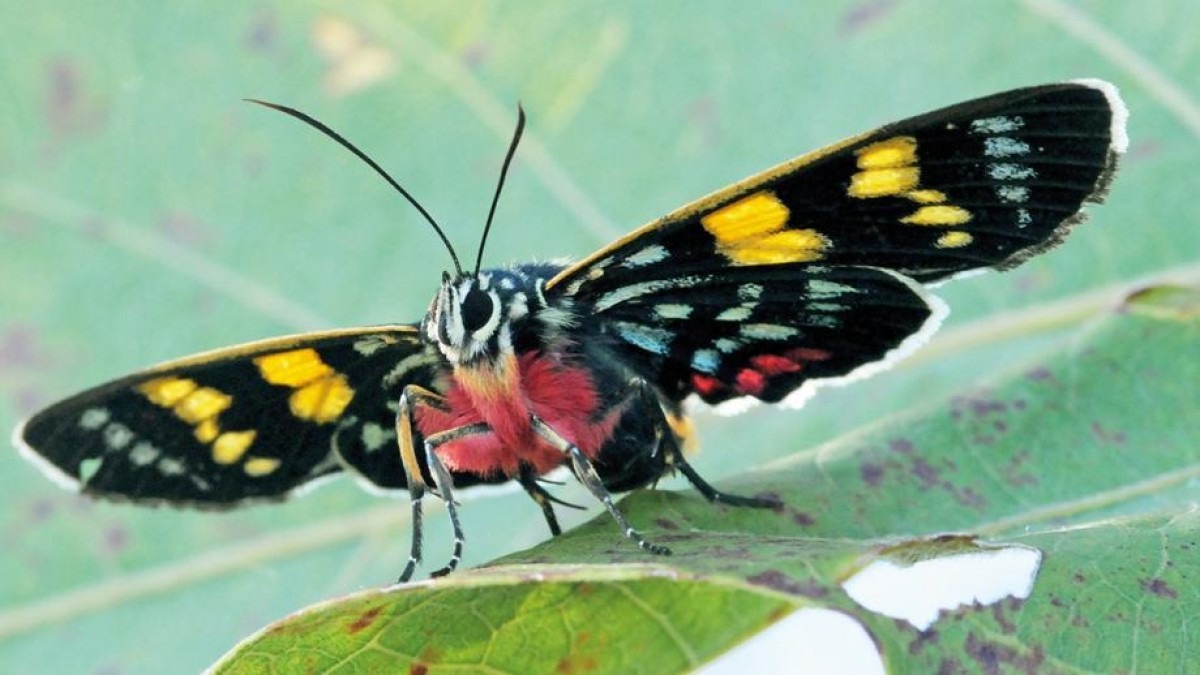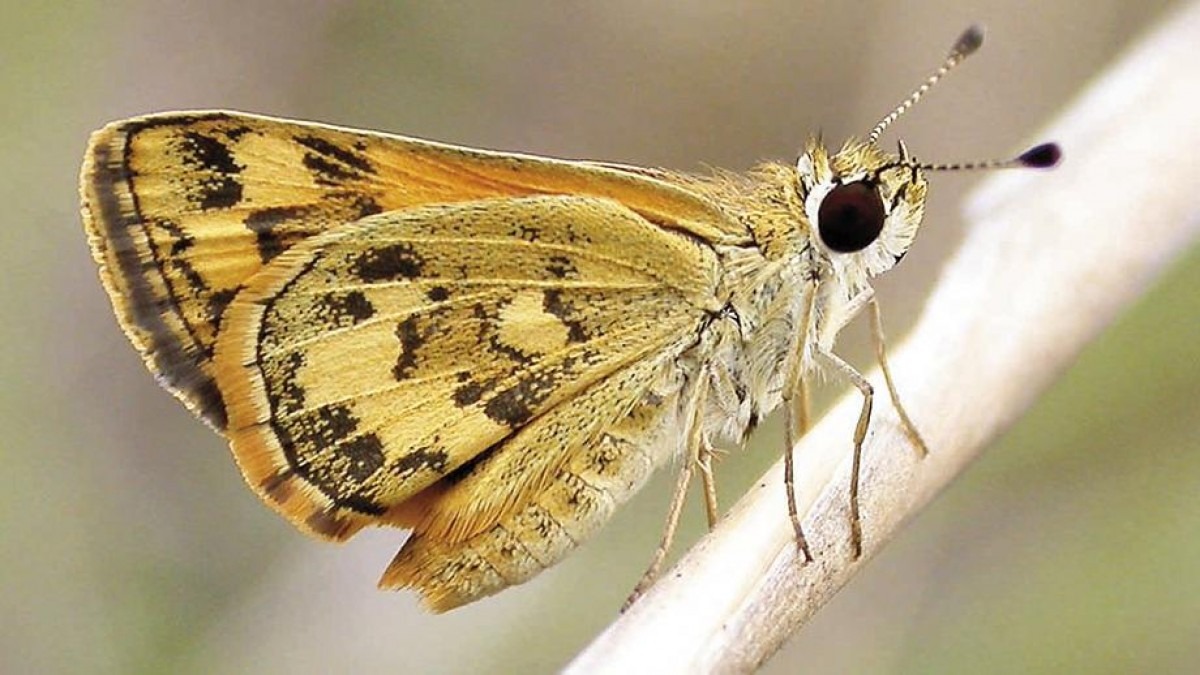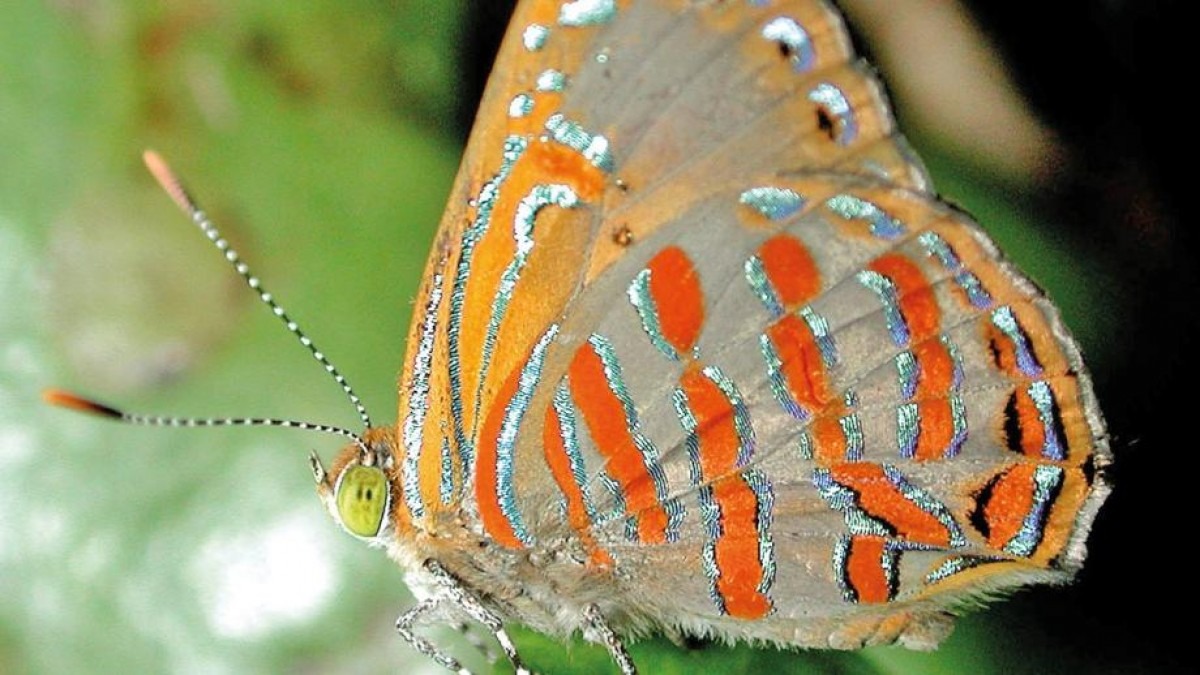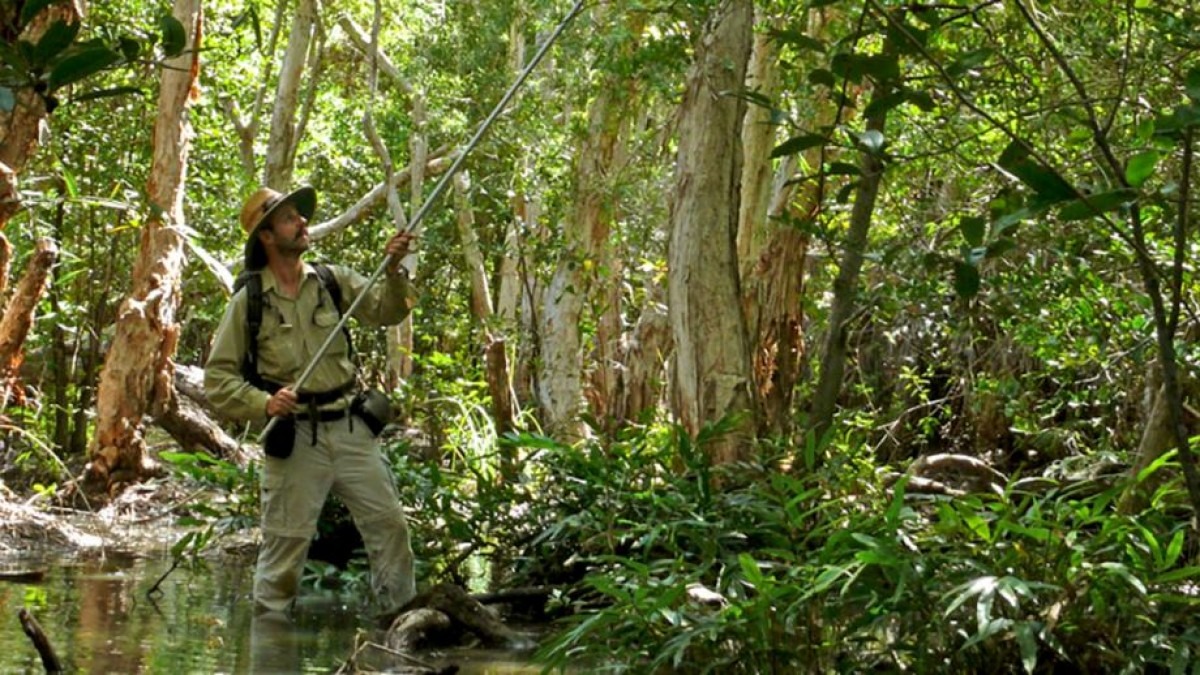The butterfly effect
Binoculars and butterfly nets: Hunting new species of butterflies is physically challenging but ultimately rewarding as Jane Faure-Brac reports.
Michael Braby finds himself on his hands and knees, nose literally to the ground, on a rocky escarpment in far north Australia. Centimetres away is a sheer drop of hundreds
of metres.
He peers into curious tiny, spiny grass growing on the harshly exposed sandstone plateaux of the Top End. He’s hunting caterpillars.
The Honorary Associate Professor of Ecology and Evolution at the ANU College of Science and Medicine is a lepidopterist or butterfly expert. He has discovered not one, but two, species of butterfly that breed and feed on resurrection grasses (Micraira spp) which completely dry out for more than half of the year.
The sandstone grass-dart (Taractrocera psammopetra) and its closely related cousin, the rock grass-dart (Taractrocera ilia), are among several amazing finds Braby made in the course of his decade-long odyssey to document invertebrates in a largely unstudied swathe of land across northern Australia.
Armed with binoculars, butterfly nets and kneepads, Braby trawled swamps, crawled under bushes and reached into the highest treetops to discover several new species among the 132 species of butterfly and 31 day-flying moths he identified.
His vast chosen study area covers more than one million square kilometres across the Kimberley in WA, the Top End and northern deserts in NT and the western gulf country in Queensland. It’s intact, frontier country and Braby pronounces it a conservation stronghold of national and international significance.
“If you want to see unique butterflies and day-flying moths, the north-eastern corner of the Top End is the go-to area within the study area,” he says. “You are guaranteed to see a highly diverse, large number of species, with high numbers of endemic species found nowhere else in the world. We now have the evidence to declare this a biodiversity hotspot that needs protecting with more resources.”
One species Braby encountered, the Mimetic Whistling Moth (Hecatesia sp.’amata’) hadn’t been seen in 121 years and was known only from a single museum specimen collected in 1887.
“I found a whole breeding colony of caterpillars, and realised this species still exists, so that was really exciting,” he says.
“We noted the host plant they were feeding off, and then I saw them on three other trips in the wet season. I also found them further east at Daly Waters, and two years ago I found them in Cape York Peninsula, so they obviously occur right across northern Australia.”
Startlingly, Braby also realised a certain species of the genus Delias, the Mangrove Jezebel (Delias aestiva) had adapted to change its food source from mistletoes to poisonous mangroves instead.
"There's no precedent for this, it's a completely unique association,” he says. “All the butterflies in this genus, from India and southern China down through SE Asia to Australia, feed on mistletoes in the Loranthaceae and related plants, but we don't know of any that feed on mangroves in the Euphorbiaceae, so it's a very novel adaptation.
"When I was rearing the larvae, I found I could still feed them on mistletoes in captivity so that suggests they haven't lost the ability to feed on that plant entirely, but that whole biological shift is a really unique thing."
Science is the richer for such luminary contributions from the unassuming Braby, but it could have been very different. His early interest in nature progressed to insect collecting as a teenager, but his love and preoccupation with birds could have taken him down a different route.
However, a crowded field in ornithology and some timely advice from a colleague started to turn his head away from birds, but it was an early success with a campaign to save a suburban butterfly that galvanised Braby into lepidoptery.
“The Eltham Copper, named after the Melbourne suburb I grew up in, was thought to be locally extinct, but I discovered some big colonies on a housing development site,” he says. “It was one of the first really big conservation issues in Australia where a butterfly became a big symbol for a conservation campaign.
“We managed to raise about $400,000 and bought some of the land for the butterfly. It was a major turning point in butterfly conservation in the country and I was caught right up in the middle of it.”
Back in the Top End, Braby’s detailed analysis allowed him to expunge 10 erroneously listed species from the historical record.
“I found quite a few cases of mistaken identity, but once they’re published, they get repeated and quoted elsewhere. It can be quite a difficult process to undo the mistakes of the past, but I hope this record will stand now.”
Difficult as striking species from the record is, Braby describes the opposite – the eureka moment of discovering a new species.
“In the case of a day-flying moth I discovered (Radinocera sp. ‘sandstone’), as soon as I caught the first one, a female, I said: “Oh jeez, what the hell is this?” I had a hunch I had something new here. I quickly worked out what the genus was and could only guess at what the male might look like. Then it was a matter of hunting that male down and working out the life history.
“But with the new grass-dart I discovered in 2010, I collaborated with a colleague at the CSIRO Australian National Insect Collection who used molecular techniques (DNA) and I compared the adults – their wing patterns, reproductive structures, and the little sex-scales they use in their courtship – all the evidence was showing this thing was really quite different, quite a separate species.
“So when you finally get something that you know has never been seen by anybody else, that’s pretty exciting. It doesn’t get much better than that.” Braby’s next challenge is to ensure his important discoveries are incorporated into conservation planning and their protection becomes policy.
This article originally appeared in ANU Reporter.




